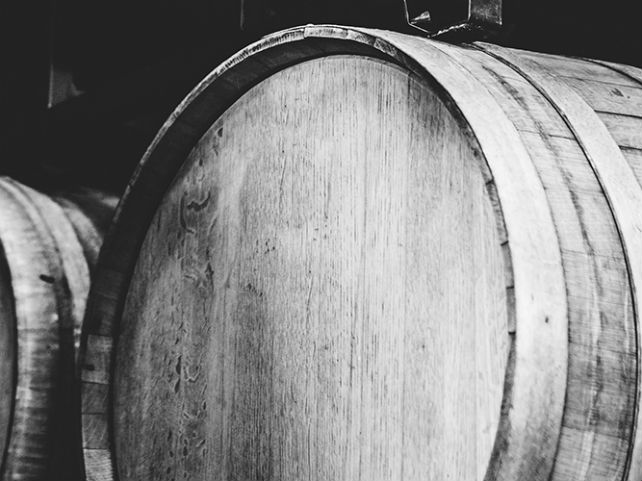In the early days wood played an important role in brewing. The most important pieces of brewing equipment (beside the kettle for obvious reasons) like fermentation tanks and barrels were made of wood. Wooden barrels have been around long before Ancient Rome, but it was the Romans that made them popular when they noticed how the Gauls transported beer in oak barrels. Once they understood the practicality of wooden barrels, they started replacing the clay amphorae they were using at that time.
The design of a barrel is simple, yet brilliant. Brilliant thanks to its timeless, belly-shaped appearance that made the barrel rugged, durable and easy to use (rolling!). Oak was the wood most often picked by the coppers because it was much softer and therefore easier to bend to the desired shape while keeping the liquid inside waterproof. Beside this practical aspect oak imparted an interesting range of flavor on the content inside. Because the production of barrels was labor intensive and expensive, they were often reused many times which resulted in each liquid picking up the flavors of the previous one.
Nowadays, wood is enjoying somewhat of a comeback with many breweries experimenting with aging beer in barrels that previously held wine or bourbon. Sour beers and stouts are the most common barrel aged styles which pick up the flavor of the previous liquid adding further complexity to their already rich aroma. In the modern age where quality, control and consistency are of great importance, this can be viewed as somewhat of a brewing adventure with uncertain and potentially really interesting results.
Wood, as we can see, had many advantages but cleaning was certainly not one of them. That is one of the reasons why Karel Dimmer, an important figure in Staropramen history, decided to take a brave step in the 1920’s and gradually start replacing the wooden maturation vats with reinforced-concrete tanks and enameled iron tanks. Thanks to this move, Staropramen became a pioneer in reaching and maintaining high standards for consistent beer quality. At that time, this was not a popular move, to say the least. As history shows, Karel Dimmer made the decision to modernize the brewery at the right time since the entire brewing industry started moving towards stainless steel and aluminum in the 1950’s.
Thanks to the beautiful imperfections of wood, oak barrels will forever be viewed in romantic light making them an important part of brewing history worth revisiting every now and then, just to make sure that progress is made with the right reason, not just for the sake of it.
Image

Beerpedia
Image

